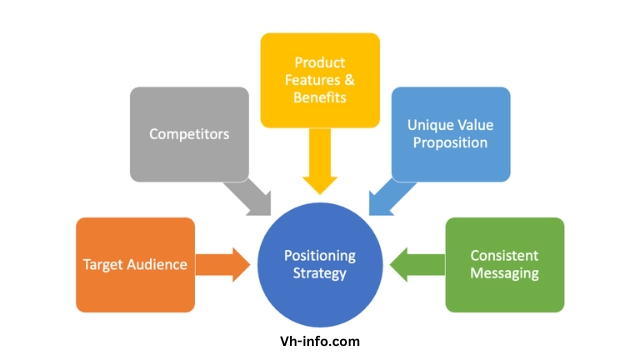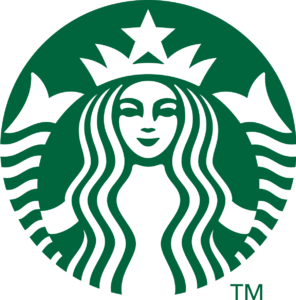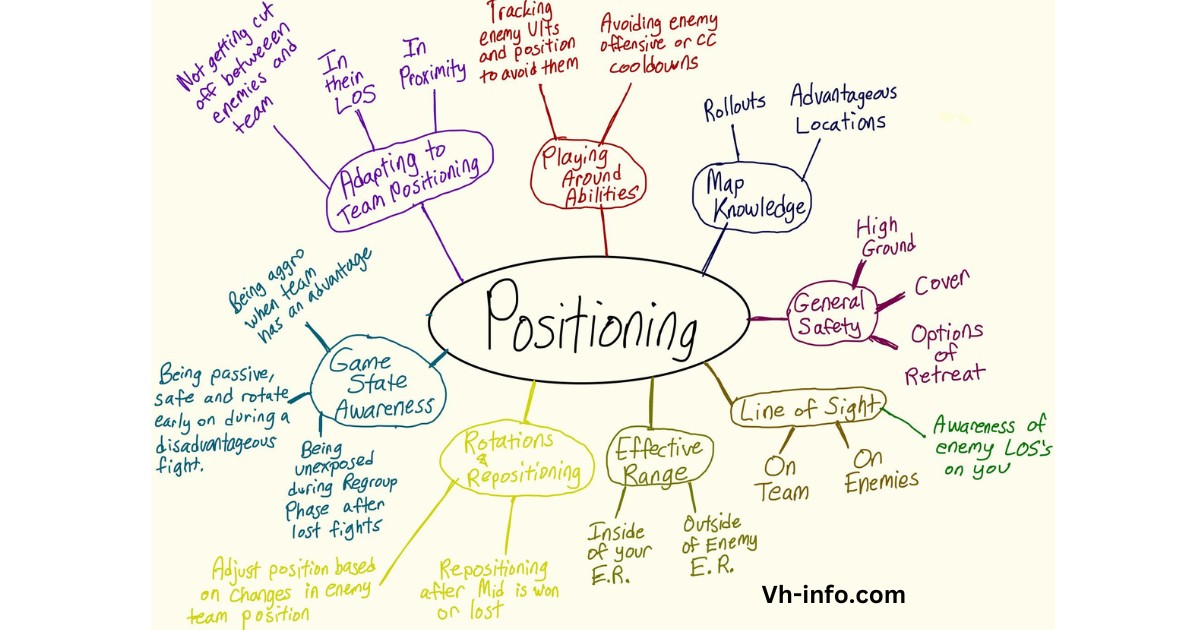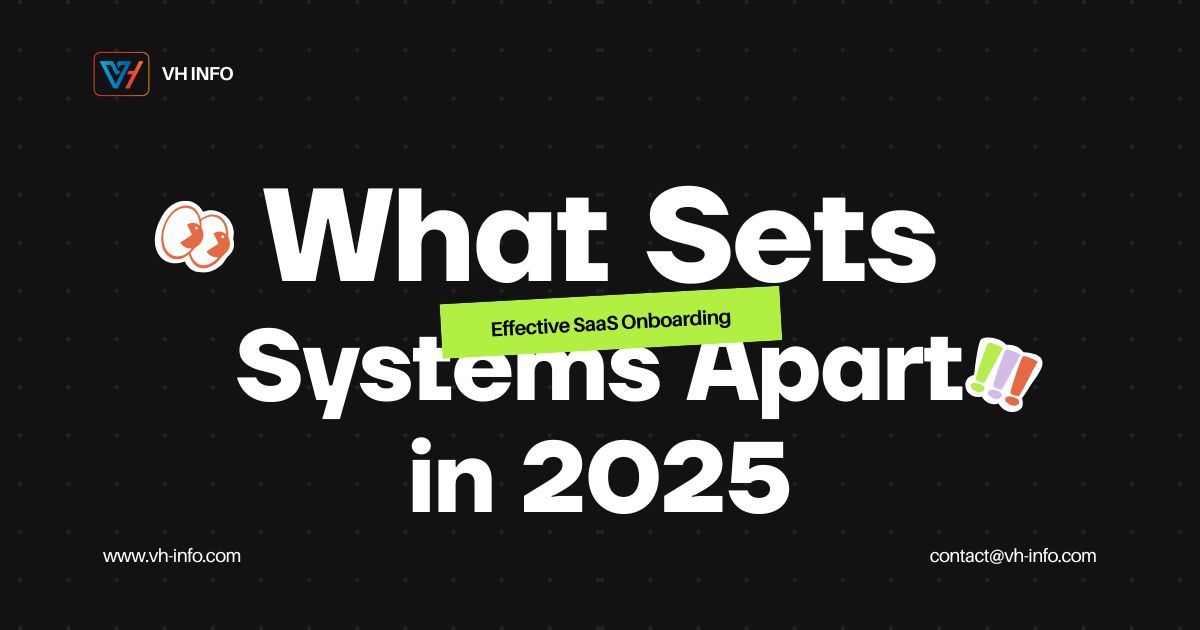Have you ever wondered why some brands stand out in your mind more than others? It’s because of their positioning.
Positioning is the art of creating a distinct image in the mind of the consumer about a product or service. It involves identifying and communicating unique features, benefits, and values that set it apart from the competition.
In this blog post, we will cover all types of positioning strategies that exist to help businesses resonate with their target audience. From pricing to emotional positioning, we have got you covered with different types of positioning strategies.
We will also dive deeper into what a positioning strategy is and how perceptual maps and positioning maps can help create an effective strategy for your brand.
Lastly, we have included examples of successful brands using these strategies so you can learn from them and apply them to your business.
What does Market Positioning Mean?

Market positioning in simple terms means shaping how people see and remember your brand. It’s like crafting a unique identity in the minds of your target customers. This involves highlighting what sets your product apart from others in the market.
You can read more on market positioning in our blog.
Types of Positioning
Based on a study in the Journal of Business & Industrial Marketing, market positioning is basically decided by things like product quality and building relationships, like personal connections.
Other important factors include where a company operates, the services they provide, and their role in the supply chain. The study also discovered that people’s opinions about a company’s positioning are affected by how well they know that company.
Pricing Positioning
A company’s pricing plan is a strategy to sell products or services at a low cost. When you promote your product as the cheapest in the market, it attracts a lot of customers because people prefer not to spend too much money.
Pricing is really important when making decisions. Companies that have great products at the lowest prices usually do well. Gillette and Dollar Shave Club are examples of this.
Cheaper options to expensive brands, like Gillette, changed the market for razor refills. But even though Dollar Shave Club had low prices, the Washington Post reported that the company lost market share.
For example, compared to Gillette’s refills that cost $2 or $5, Dollar Shave Club’s are just 20 cents. Having the lowest price makes it easier to get people to buy your product.
Customer Service Positioning
When you’re picking a store or service for something you want to buy, you might choose based on how well they help you. Businesses that are known for having great customer support use this as an advantage by making their friendly customer service stand out.
Some companies might focus on their super knowledgeable support & sales team if they sell a product that’s a bit tricky for customers. This way, they can charge more for their products because they’re giving customers really good service.
Take Apple, for instance. Their products are expensive compared to their main competitors, but their customer support team is known for its core values of being nice and quick to respond.
Convenience Positioning
Making customers’ lives easier is all about convenience. This could mean having an easy-to-reach location, offering free returns, or having an online store. Let’s compare Simple with Bank of America to understand this.
Most traditional banks are still working on making a good mobile app, but online banks like Simple are spending a lot to attract younger and tech-savvy customers.
Apart from not charging any fees, Simple also has a helpful tool for budgeting and saving money.
Companies can show how their products make life easier for customers by using strategies that focus on convenience. This might include easy access, being available in many places, or working well on different devices. Plus, this strategy can give more reasons for customers to choose cost-effective options.
Differentiation Positioning
When it comes to products and services, being different is important. If what you offer has special features, then competitors won’t be a big threat.
Differential positioning is mostly about being unique compared to what others are offering.
Take Tesla, for example. They joined the electric car market with a luxury sports vehicle that was way fancier than typical electric cars like the Toyota Prius. Tesla aimed at the high-end market with their Model S.
Tesla didn’t focus on being the cheapest or having the best brand or quality. They positioned themselves as a premium company, so their cars cost more than the competition. But in return, Tesla cars have a longer range and use energy more efficiently.
There could be challenges, like people not being familiar with something new. But on the positive side, when you have a new product, you can do research and figure out how to make it better.
User Group Positioning
These types of positioning focus on a specific group of people, explaining what the product offers and why it’s perfect for that particular audience.
It’s not just about having a plan. You can make your brand stand out by being the original or the best-selling brand.
Present your products as solutions to bigger problems. You can also compare your company to a competitor’s brand. This means pointing out your competitors’ weaknesses in your ads and showing how your product is better.
Take Johnson and Axe, for example. Johnson’s shampoo is gentle for kids, while Axe body spray is aimed at men.
When making your plan, think about what your target buyer likes. For instance, what’s the best choice for them when buying the latest technology, and make sure they get top-notch customer service.
Quality Positioning
Quality positioning is a strategy where companies build their reputation by selling really good products. Customers trust such brands more and think they’re reliable, even if they cost more. Brands doing quality positioning target a specific group of people by highlighting how fancy and special their products are.
They focus on long-lasting products with natural ingredients, unique materials or winning international awards to create high brand awareness. Companies that build a reputation for having top-quality, long-lasting products can attract customers who prefer not to buy cheap things that don’t last. Building a brand takes time but it pays off as it results in more loyal and interested customers.
Take Rolex, for example. It’s linked with success and being the best. Rolex sells high-priced watches because they prioritize quality. This is why influential and wealthy individuals choose Rolex. The brand remains strong by using new and high-quality materials, emphasizing the benefits of their products, such as water resistance up to 100 meters.
Value-Based Positioning
This positioning strategy focuses on the value customers receive from purchasing a product. It promises to solve problems, add convenience, and make things easier, giving the company a competitive advantage. By offering benefits such as an easy return policy, free shipping, or local delivery, companies can attract new customers and foster loyalty. Emphasizing a simple buying experience, gathering customer feedback, and showcasing problem-solving abilities sets you apart from competitors.
Take “One” for example. It’s an online service that makes banking easier. Unlike traditional banks that are a bit slow with technology, One has used this to appeal to a younger, more tech-savvy crowd. Plus, they have built-in budgeting and savings tools and don’t charge any fees. This way, they’re not just selling banking services; they’re selling an easier and more modern way of doing banking.
Social Media Positioning
These positions are special because they target specific channels instead of using general techniques. Your channel is basically how the message about your product gets to people.
You can’t promote a brand everywhere. When using this strategy, the important thing is to pick the channels that your target audience uses the most.
These channels could be within a social media platform, but they might be different ones too.
Lifestyle Positioning
Brands use lifestyle positioning to show a certain culture or way of life. This type of positioning is for people who live a similar lifestyle and can connect with the personalities shown in the brand’s ads. It makes the product or service seem like it fits with the ideas, dreams, and looks that the target customers might have.
Lifestyle positioning is all about the belief that certain foods, products, and clothes can help people become more like their best selves. To do this strategy, you need to understand who your customers are and focus your efforts on attracting those people.
For example, a finance app might say it’s a tool to grow personal wealth through risky investments, appealing to people with a lively lifestyle. Or it might do its brand positioning as a tool for families to save money by putting aside a small amount each month.
Emotional Positioning
Emotional positioning is about creating strong connections with the audience that last a long time.
To use this strategy, a brand should stick to three important values: being friendly and open, being honest, and being good at what they do. Also, to make this strategy work, marketers need to really understand the emotions of the people they want to reach.
Different emotions, both good and bad, can affect how people feel about a brand and can influence what they choose to buy. When making a strategy, marketers often think about common emotions like fear, guilt, competition, love, and belonging.
If you’re starting a business and aren’t sure what emotions your audience has, you can do market research, check out your competition, and pay attention to what people are saying on social media.
Dove is an example of a brand that does this well. They create advertising campaigns that connect with women’s natural beauty. By focusing on the emotional side, Dove’s audience can relate to the message. Dove wants women to feel confident about their beauty instead of being afraid, so they work to teach young women about self-esteem and having a healthy body image.
Problem and Solution Positioning
Instead of just talking about how great a product is, problem and solution positioning focuses on understanding what problems customers have and how a product can help solve them.
To make this strategy work, a brand needs to know why people want a product and then explain how their product can fix those issues.
Companies using this strategy pay attention to what customers need and use that info to make their product better than others. It’s a chance to be ahead of the competition by offering a product that really meets what customers are looking for, while other companies might miss the mark.
For example, financial institutions like banks and mortgage brokers often use this strategy. Take Cash App, for instance. It’s a smartphone app that lets users transfer money for free. Instead of making it complicated, they give each user a special ID called $Cashtag. When people want to send money, all they need is this $Cashtag, making transfers really quick and easy. Cash App also keeps improving by adding new features like direct deposit and bitcoin investment to meet all the financial needs of individuals.
Celebrity-Driven Positioning
Celebrity-driven positioning means using famous people to promote a brand. This helps more people know about the brand and attracts fans of those celebrities. For example, if you get a top chef to be in an ad for a cooking product, it will get people interested. They will trust the product more because their favorite chef is using it.
Another way to use this strategy is by connecting a celebrity’s qualities to what your audience likes. This creates an emotional link with the brand. When customers buy the brand’s products, they feel connected to the celebrity and their status symbol.
Take Gatorade, for instance. They use pro athletes to show how good their products are. It’s effective because it suggests that Gatorade helps athletes perform really well.
Hyper-Specialized Positioning
Brands help solve different problems for their customers. Some people like one brand that does everything for convenience, while others prefer brands that focus on specific things in a detailed way. Hyper-specialized positioning means a product can help users with really complicated customer needs that other brands can’t handle.
To make a good positioning strategy, you need to be seen as an expert in your specific market. Make special and helpful things, share information often, and talk with people by answering questions and responding to comments.
Virgin Atlantic stands out from other airlines because it thinks in a creative way. It was one of the first to offer internet on flights and personal movie screens. Now, it wants to give its customers a chance to travel to space. This kind of positioning also makes people trust the company.
Disruptive Positioning
In every business, there are usual ways of doing things and traditions. Disruptive positioning wants to change these routines, do things in a new way, and maybe even change the whole industry. It means using new strategies that nobody has used before instead of doing things the usual way.
New disruptive strategies often come because of new technology, but you can also use technology to shake things up. To be disruptive, you need to keep up with new ideas and trends. Follow influencers on social media in your field and pay attention to what they’re saying. Remember that not all new strategies work, and that’s okay. Treat the ones that don’t work as chances to learn, not as failures.
Airbnb is a great example of disruptive positioning. This clever website gave people cheaper options than hotels and became a popular place for global travel. Plus, they offer all sorts of different places to stay, like tents, boats, apartments, villas, and even treehouses.
Leader-Based Positioning
A brand can also say it’s the best in its industry. But this only works if the company always gives really good quality, great service, and keeps coming up with new ideas. By saying they’re leaders in what they do, brands try to show they’re better than the others.
To do this, a company has to always check what’s new and happening in their industry. They want to make a culture where their business always offers the best stuff. If a company is seen as a leader, they can charge higher prices because people think they give the best experience. This approach depends a lot on working well as a team, being creative, and solving problems.
Take McDonald’s, for example. It’s the most profitable fast food company in the world because it focuses on giving great customer service, quickly reacting to what other companies are doing, and using smart marketing early on. Quality, service, cleanliness, and value were really important for McDonald’s from the start, and that’s why it’s so successful now.
Now, you have to think about what kind of brand positioning strategy & product positioning statement is best for your company. Then, by using one of these strategies, you can show why you’re better, make potential customers stick with you, and sell more to your existing customer base.
What is Positioning Strategy?

Positioning strategy is like a special plan in marketing, known as a marketing plan, that helps a business stand out from others. It’s about making people think of a brand in a certain way and showing why it’s better than the competition. This strategy figures out where a business fits in the market and how it can attract more customers by highlighting its unique strengths.
Types of positioning strategies

When thinking about how to make your brand stand out, there are usually three main ways to do it.
These three ways are called comparative, differentiation, and segmentation strategies.
Comparative
This strategy works by comparing different products or brands to show why one is better and what makes it special.
Differentiation
This strategy makes a brand’s products stand out from others by focusing on unique features that can’t easily be copied.
Segmentation
When there are different groups of people you want to reach, this strategy focuses on meeting the specific needs of each group.
Perceptual maps & positioning maps
Perceptual and positioning maps are like helpful tools in marketing that businesses use to plan how they want their brand, product, or service to be seen. These maps have lines that show two important things, like quality or price.
You can put existing brands on the map to see where they stand. Once you know where your competition is, you can decide where to put your brand. You can also make different maps with different things you want to compare.
Although these maps may seem similar, people often use the terms perceptual and positioning interchangeably.
However, there are some important differences in how they are made and understood.
Perceptual Map

A perceptual map is like a tool that shows how people see different brands or products in the market.
It’s essential to know that this map only reflects what people think, and there might be a gap between what consumers believe and what’s really happening in the market.
Even though it doesn’t show the exact position of a brand or what the brand wants, it’s still helpful. It lets businesses see how customers view their products compared to others, and it can highlight gaps or opportunities in the market as people may see things differently.
But remember, this map is based on what people think, and it might not always match the real characteristics of a product or the image a brand wants to have.
Positioning Map

These two things are pretty similar, but the big difference is that a positioning map doesn’t show what consumers think about products or brands. Instead, it has different things on it that help see where competing brands or products stand in the market.
When businesses use positioning maps, they can then decide where they want to be in the market. They might choose a spot on the map that’s not taken by other brands, or they might want to be in direct competition with existing ones.
Examples of Positioning Strategies
Think about all the companies you deal with every day – they all have different plans to make you see them in a certain way.
Take two famous brands, Starbucks and Life Time Fitness, for example. They each have their own way of making you think about them.
Positioning Strategy Example: Starbucks

Starbucks is known for having really good coffee, and they work hard to keep this reputation.
They choose specific details carefully, like where they put their stores and where they get their coffee beans. Instead of having too many stores in one place, they plan where to put them to keep their premium image.
By focusing on richer areas and not competing directly with other coffee brands, Starbucks can charge more for their coffee. This has helped them keep growing even when times are tough.
While they started with just coffee, Starbucks now sells lots of different food and drinks, like sandwiches and salads. This helps them attract more kinds of customers, but they still make sure everything they sell is high quality.
They get their coffee beans from the best growers and roast them just right. This careful attention to detail makes Starbucks different from other coffee places and keeps them as a top-notch coffee brand.
Looking ahead, Starbucks plans to open in new places and try out different store types, like express locations and drive-thru only stores.
This way, they can keep growing and make sure they meet what customers want. With a strong brand and clever business ideas, Starbucks is set up for more success in the future.
Positioning Strategy Example: Life Time Fitness

Life Time Fitness is a health club company from Minnesota, where I’m from. I worked there for over three years, so I know how they want people to see them.
Even though Life Time Fitness has fewer clubs than some other health club companies, they have a different plan. They don’t just want to be a regular gym. Their clubs have lots of things like fitness classes, personal training, child care, and spa services. This has helped them grow fast and become one of the biggest health club companies worldwide.
But they don’t just stop there. Life Time keeps adding new things and reaching more people. They’ve started selling health food products, opened places for work, and even health-focused living communities.
Because they care a lot about how customers feel, Life Time Fitness is known as one of the best health club companies. They’re also one of the most successful, making over $2 billion every year.
Before you go….
When creating a positioning strategy for your brand, there are many different types of positioning you can utilize based on your target audience, competition, and business goals.
Strategies like TOFU vs BOFU, financial services marketing, segmentation, the 5 Ps of marketing, paid acquisition, focused differentiation, keyword outlining, and qualitative research can all help shape an effective positioning strategy that resonates.
Choosing the right approach is crucial for standing out in a crowded market.
Conclusion
In the end, there are many ways that businesses can stand out in the market using brand identity, brand image, effective positioning and marketing strategies in snychronisation. They can use different types of positioning strategies to do this.
Some of these include pricing, customer service, convenience, differentiation, social media, and quality positioning. Different positioning strategies have different advantages, different customer satisfaction and can be adjusted to fit a business’s needs and goals.
Positioning is not just about creating a perception but also delivering on promises made to customers. So, it’s important for businesses to align their strategy with their overall business plan and provide value consistently.
By adopting the right positioning strategy and executing it effectively, businesses can attract and retain customers and grow. Take time to evaluate your business and identify the best positioning strategy for your goals.



